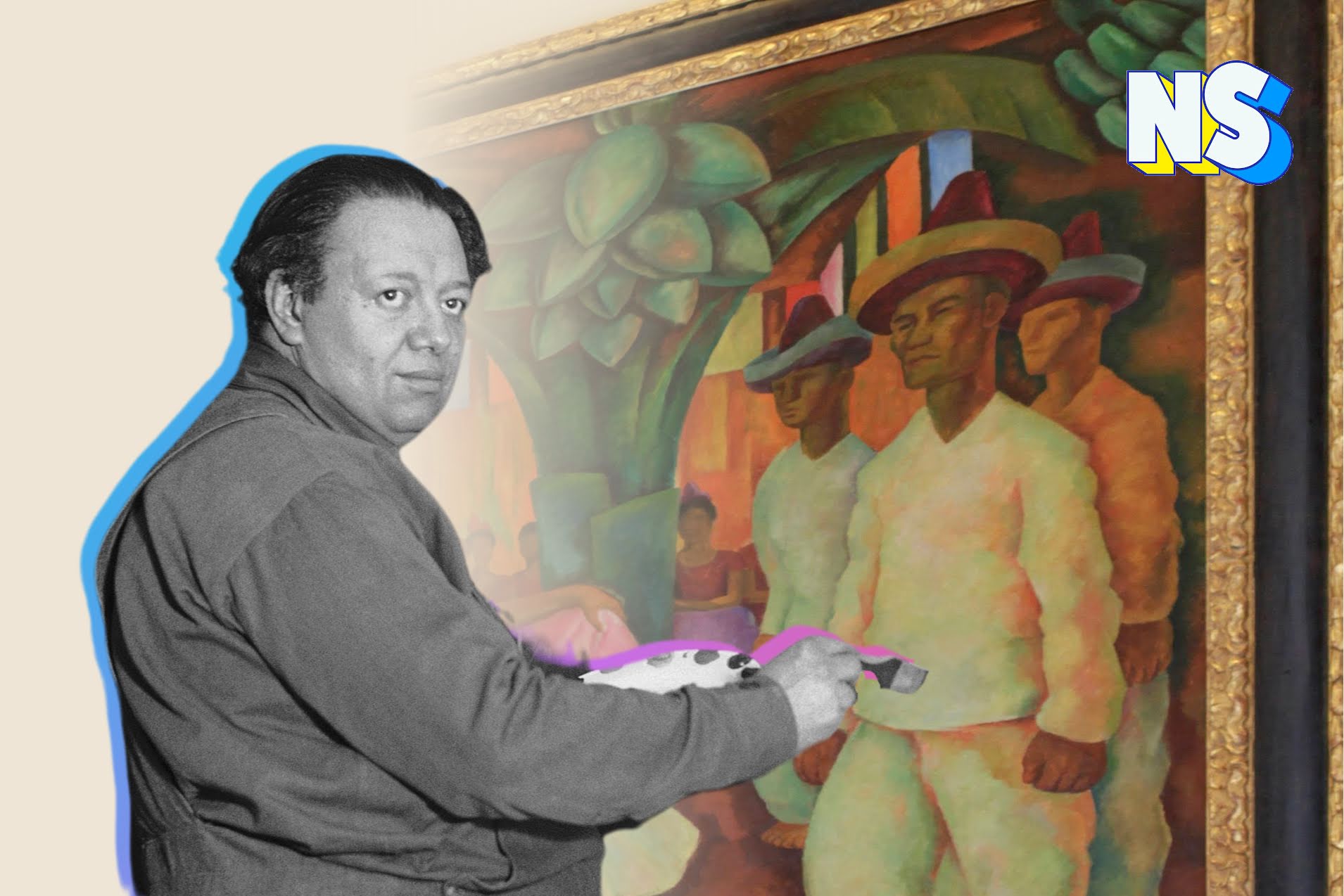Credit: Nuestro Stories
Mexican artist and muralist Diego Rivera painted the original Baile en Tehuantepec in 1928 as part of his mission to “reproduce the pure basic images of my land.” It is one of his best-known works.
The painting, the largest canvas Rivera created in his lifetime, shows Oaxacan dancers performing the folk dance “zandunga,” a traditional Mexican waltz, under a banana tree. It measures 79 inches by 64 ½ inches.
The painting is Rivera’s tribute to the customs and traditions of Tehuantepec, Oaxaca, in southern Mexico. He infused the painting with intense oranges, pinks, and greens reminiscent of the land Rivera was celebrating.
Read more: These Three Mexican Artists Are Known As ‘The Three Greats’ of Muralism
Following the journey of ‘Baile en Tehuantepec’
In 1930, Baile en Tehuantepec was exhibited for the first time in the United States in the Metropolitan Museum of Art and in 1931 was included as part of the Diego Rivera retrospective at the MoMA.With time, it became the most expensive work of Latin American art.
Interestingly, 1928 was the year Rivera met the celebrated Mexican painter Frida Kahlo (who loved to dress as an Oaxacan woman) and married her a year later.
He painted Baile en Tehuantepec during a time of great creativity when Rivera’s attention was focused on the Oaxaca region. Since 1920, he dedicated a dozen or more paintings to scenes typical of the ismuth of Tehuantepec.
Rivera said his mission was for his paintings to reflect “the social life of Mexico as I saw it and through my vision of the truth to show the masses the outline of the future.”
The beauty is in the detail
Baile en Tehuantepec depicts six principal dancers, all of them barefoot, poised to start the zandunga dance, in the forefront of the painting. Rivera painted the female Oaxacan dancers in embroidered huipiles, a traditional, sleeveless tunic, and rabona skirts with a pleated ruffle on the bottom. Their hair is braided and interlaced with red silk ribbons.
One of the women has a traditional necklace on, usually worn for special occasions. All the women are holding up a side of the skirt in preparation to start the dance. The male dancers are dressed in white cotton trousers, usually folded in front and held with a girdle-like belt, a white shirt, and a wide hat.
Both male and female dancers are stock still, almost rigid as if they were waiting for someone to give them permission to start the revelry.
This a reminder that Latin American art is also sought after
The painting was first sold to Mrs. James Murphy, a collector from New York. In 1995, the Argentine real estate developer and art collector Eduardo Costantini fell in love with the painting at an auction at Sotheby’s in New York. Sadly, he had come to the auction to buy Kahlo’s Autorretrato con loro y chango, so he did not have enough money for both.
Yet, 21 years later, he purchased it for 15.7 million dollars, making it the most expensive piece in the history of Latin American art.
https://nuestrostories.com/wp-content/uploads/2022/04/Nuestro-Stories-Writer-Image-Placeholder-218×300.png
By Xxxxx Xxxx
Lorem ipsum dolor sit amet, consectetur adipiscing elit, sed do eiusmod tempor incididunt ut labore et dolore magna aliqua. Ut enim ad minim veniam, quis nostrud exercitation ullamco laboris nisi ut aliquip ex ea commodo consequat. Duis aute irure dolor in reprehenderit in voluptate velit esse cillum dolore eu fugiat nulla pariatur. Excepteur sint occaecat cupidatat non proident, sunt in culpa qui officia deserunt mollit anim id est laborum.





